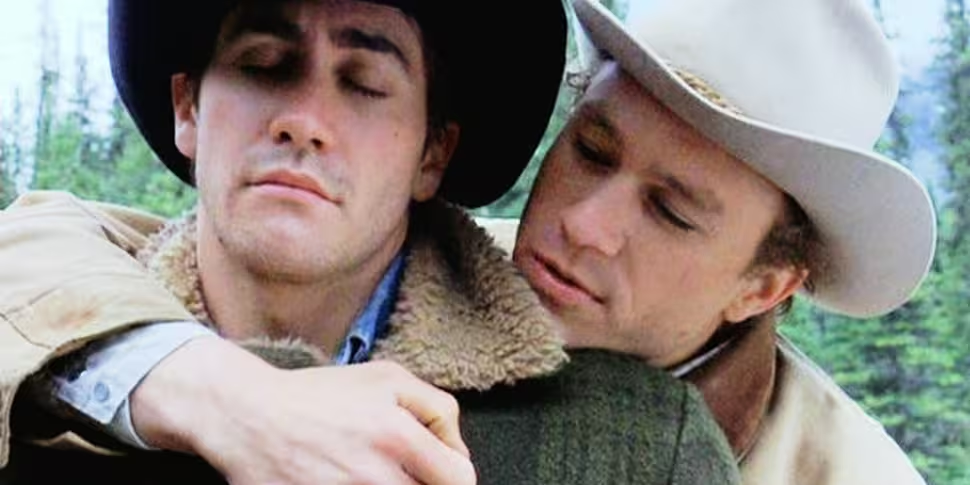Think of a gay male character, and it's relatively easy: Robin Williams in The Birdcage, Daniel Day Lewis in My Beautiful Laundrette, Al Pacino in Dog Day Afternoon, or Heath Ledger and Jake Gyllenhaal in Brokeback Mountain.
Thinking of a gay female character, and it's also not difficult; Annette Bening or Julianne Moore in The Kids Are Alright, Naomi Watts in Mulholland Drive, Lea Seydoux in Blue Is The Warmest Colour, or Cate Blanchett and Rooney Mara in Carol.
What about transgendered characters? Might seem a little more difficult, but they're still pretty plentiful: Felicity Huffman in Transamerica, Hilary Swank in Boys Don't Cry, Jared Leto in Dallas Buyer's Club or Eddie Redmayne in The Danish Girl.
What about a female bisexual character? Pretty much the universal answer is Sharon Stone in Basic Instinct. Or what about a male bisexual character? Most people would come up completely stumped. So in terms of popular cinematic portrayals, bisexuals can choose between psychopathic killer or non existent.
In a year when alternative sexualities are getting more attention than ever from the big awards ceremonies - both The Danish Girl and Carol are up for several awards - and as TV shows such as Ru Paul's Drag Race and How To Get Away With Murder are very much a part of the popular consciousness, how is that bisexuality is getting unanimously ignored by cinema?
Sex columnist and film critic Roe McDermott thinks that movies are merely reflecting back societies stance on the matter: "Due to our discomfort with sexual fluidity or any ambiguity and the supposed social threat that bisexuality poses, biphobia is still rampant and there's a huge pressure placed on bisexual people to conform to a straight/gay hetero/homonormative narrative. Also, mainstream culture presumes that long-term relationships demonstrate a bisexual person's "real" sexuality, judging them as straight or gay by what gender their long-term partner is. This then is conflated with the fact that some - some - gay people come out as bi instead of gay initially, often in order to placate homophobia from family/friends, and these stories are weaponised in order to further erase bi experiences. Even LGBT groups often ignore bisexuality and issues to do with biphobia, causing rifts within the community and a focus on only gay and lesbian narratives. So I think it's unsurprising that these attitudes seep into cinema, though they are also gendered".
Essentially, cinema represents women as freer sexual creatures, while men must remain sexually binary. Females can explore their sexuality, such as in Cruel Intentions, Black Swan or Vicky Christina Barcelona, without a label being pushed on them. They're just experimenting.
However, for males to do the same thing, they are automatically locked off from heterosexuality and labelled as gay and/or closeted. Despite the fact that both of the male characters in Brokeback Mountain have long-term, mostly loving relationships with their wives, neither of the men are thought of as being bisexual - it's 'that gay cowboy movie'.
McDermott continued: "[T]here's a certain pandering to mainstream audience's comfort levels, which are more familiar with and therefore more comfortable with purely gay/straight narratives. While female bisexuality can be seen as desirable and therefore is represented by directors, I think damaging and homophobic attitudes towards masculinity and sexuality are why bisexual men are vastly underrepresented onscreen".
Is bisexuality simply too complicated or too vague for mainstream audiences to get behind? The biphobic chant of "bi now, gay later" doesn't allow for sexual shades of grey. To that end, many of Hollywood's biggest actors have publicly stated that they turned down major gay roles for fear of being no longer desirable or aspirational.
More importantly, is there any potential light at the end of this tunnel? Hopefully, yes, and the source is one of the most play-it-safe movie-makers in cinema right now: Marvel.
This week sees the release of their new Deadpool movie, a character in the comics which has been generally defined as pansexual - potentially attracted to all genders and orientations. While in the first movie the character has a long-term female partner, there are subtle hints towards the depths of the character's orientation, and when questioned about the future, actor Ryan Reynolds told Variety that he thought it would be “nice” for Deadpool to have a boyfriend at some point.
“I certainly wouldn’t be the guy standing in the way of that. That would be great. I love that about Deadpool. I love that he can break any boundary. In the future, I hope we get to do that more".
So if one of the biggest movie production companies in the world can possibly make their current hot-product into something with an alternative slant, perhaps the rest of Hollywood can follow suit? Here's hoping.









